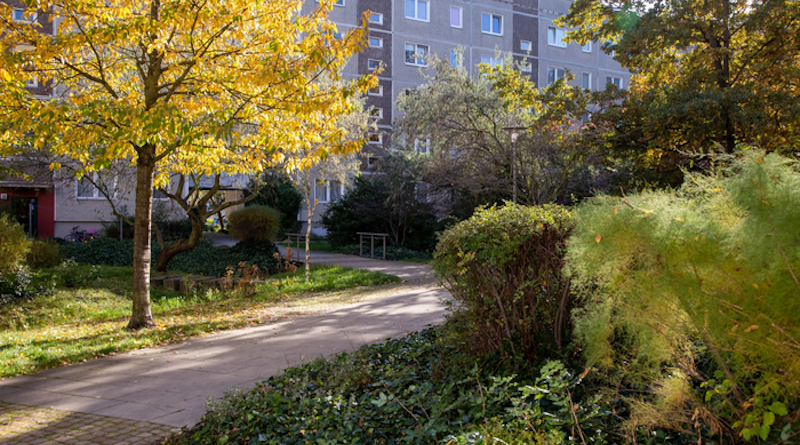Green Backyards Help Increase Urban Climate Resilience: Here Is How
Green spaces in cities have a number of positive effects: they’re good for our physical and mental health, they’re good for the environment, and they can even help fight off the effects of climate change.
To explore the impact of additional green structures in cities, Katja Schmidt and Ariane Walz, affiliated with the University of Potsdam, Germany, quantified their effects on different aspects such as thermal comfort, biodiversity, carbon storage and social interaction. Their study, published in the open-access, peer-reviewed journal One Ecosystem, combines knowledge from health research, ecology and socio-ecological research, and shows how the better we know a particular type of ecosystem, the better we can adapt to climate change.
Pursuing a multi-method approach that ranged from local climate measurements to habitat and tree mapping, the authors compared four green residential courtyards in Potsdam. The spaces were similarly built, but had different ratios and sizes of features (lawns, flowerbeds, paths, playgrounds and allotments), as well as different tree and shrub population.
While doing their research, Schmidt and Walz saw how even small differences in the green structure affect the provision of benefits, but one thing was clear: the greener courtyards yielded more benefits. Trees have the vital ability to cool down the environment and increase thermal comfort. Remarkably, the researchers report additional cooling effects of up to 11°C in the greener court yards. This means that residential green structures can prove of great value for human health during summertime heat, when asphalt and buildings make hot days even hotter. Considering the ageing demographic and the likely increase of heatwaves in the area, this is likely to have even greater health implications in the coming years.
Urban green spaces can also be an important factor in carbon storage, as urban soils and trees have the capacity to act as a sink for atmospheric carbon dioxide. The residential yards with more and larger trees, logically, have the power to store more carbon. This is where proper maintenance comes in: when yards are managed sustainably, trees live longer and can store more carbon.
“Considering the trend of increasing quantity and magnitude of extreme weather events and the vulnerability of urban areas, green spaces are known to provide great potential to increase urban climate resilience. Our work highlights the widespread positive effects of additional green structures in residential open spaces, a type of urban green space that is frequently understudied,” points out Dr. Schmidt.
As a conclusion, the researchers point out that if land owners and leaseholders receive incentives to commit to climate adaptation, and neighbourhoods come up with deliberate management strategies, these benefits could be further enhanced, contributing to a more sustainable urban development.

